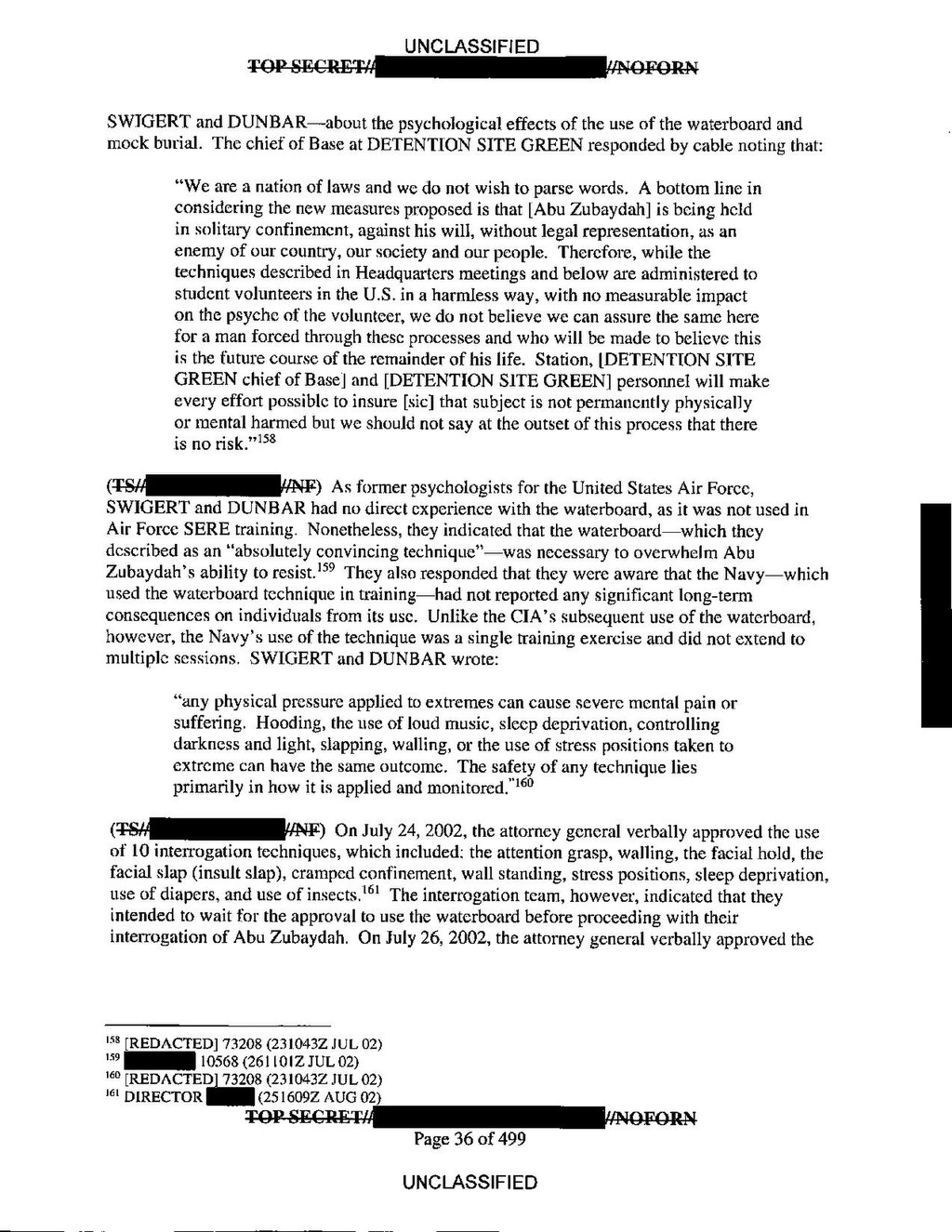UNCLASSIFIED
SWIGERT and DUNBAR—about the psychological effects of the use of the waterboard and mock burial. The chief of Base at DETENTION SITE GREEN responded by cable noting that:
- "We are a nation of laws and we do not wish to parse words. A bottom line in considering the new measures proposed is that [Abu Zubaydah] is being held in solitary confinement, against his will, without legal representation, as an enemy of our country, our society and our people. Therefore, while the techniques described in Headquarters meetings and below are administered to student volunteers in the U.S. in a harmless way, with no measurable impact on the psyche of the volunteer, we do not believe we can assure the same here for a man forced through these processes and who will be made to believe this is the future course of the remainder of his life. Station, [DETENTION SITE GREEN chief of Base] and [DETENTION SITE GREEN] personnel will make every effort possible to insure [sic] that subject is not permanently physically or {{SIC|mental|mentally} harmed but we should not say at the outset of this process that there is no risk."[1]
(TS// //NF) As former psychologists for the United States Air Force, SWIGERT and DUNBAR had no direct experience with the waterboard, as it was not used in Air Force SERE training. Nonetheless, they indicated that the waterboard—which they described as an "absolutely convincing technique"—was necessary to overwhelm Abu Zubaydah's ability to resist.[2] They also responded that they were aware that the Navy—which used the waterboard technique in training—had not reported any significant long-term consequences on individuals from its use. Unlike the CIA's subsequent use of the waterboard, however, the Navy's use of the technique was a single training exercise and did not extend to multiple sessions. SWIGERT and DUNBAR wrote:
- "any physical pressure applied to extremes can cause severe mental pain or suffering. Hooding, the use of loud music, sleep deprivation, controlling darkness and light, slapping, walling, or the use of stress positions taken to extreme can have the same outcome. The safety of any technique lies primarily in how it is applied and monitored."[3]
(TS// //NF) On July 24, 2002, the attorney general verbally approved the use of 10 interrogation techniques, which included: the attention grasp, walling, the facial hold, the facial slap (insult slap), cramped confinement, wall standing, stress positions, sleep deprivation, use of diapers, and use of insects.[4] The interrogation team, however, indicated that they intended to wait for the approval to use the waterboard before proceeding with their interrogation of Abu Zubaydah. On July 26, 2002, the attorney general verbally approved the
Page 36 of 499
UNCLASSIFIED
